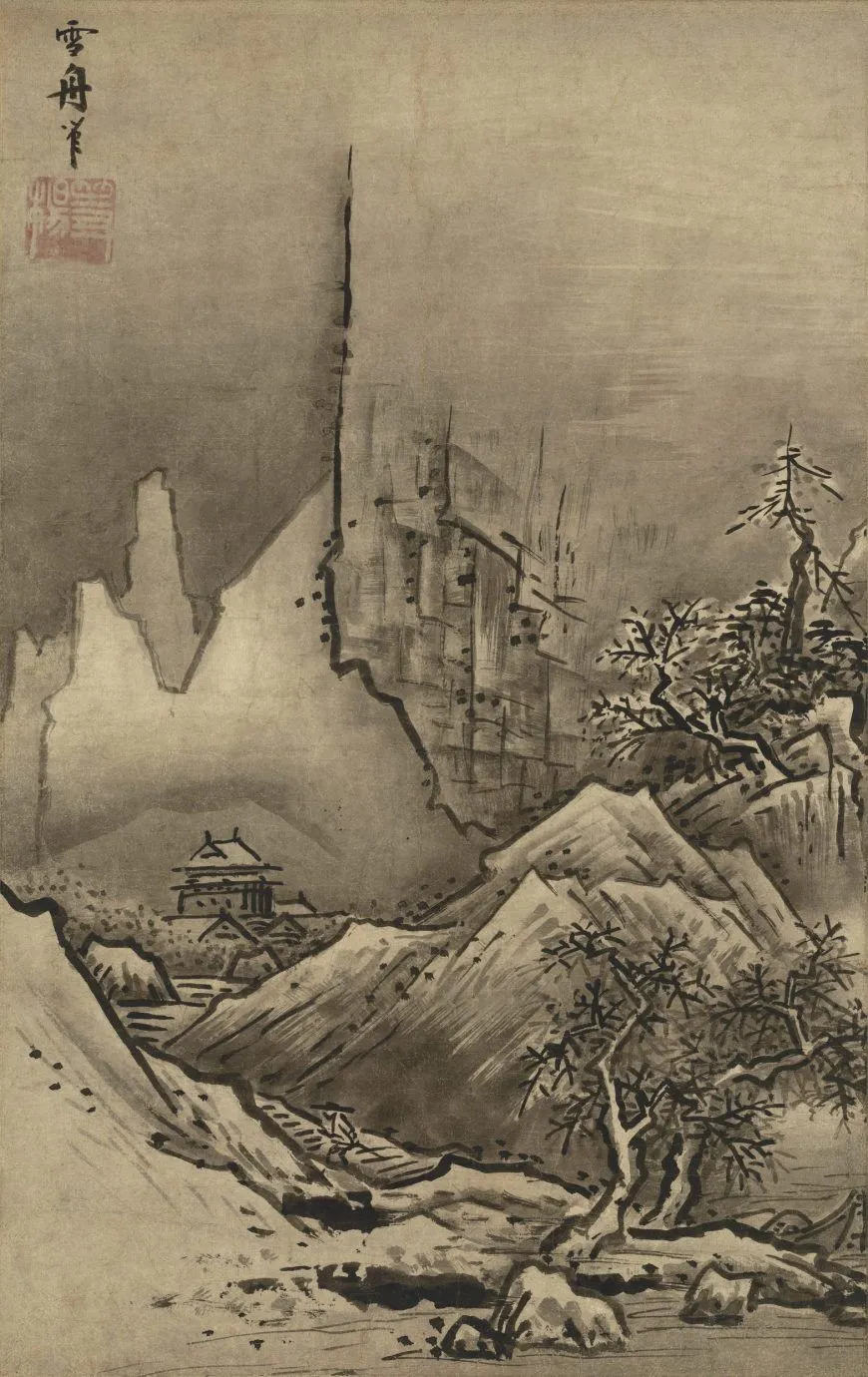A Brief Glimpse into Non-Western Art Forms: Meiji Era Japan
 |
| Cat and Lantern, Kobayashi Kiyochika (1886, Japan) |
 |
| Winter Landscape, Sesshū Tōyō (1470, Japan) |
Bird and Willow in Snow, Shibata Zenshin (1882, Japan) |
renowned Japanese artist Shibata Zenshin. Though criticized by his colleagues for being both too modern and traditional, Shibata remains a staple in Japanese museums. Back in my senior year of high school, I had the excellent opportunity to travel with my class to Japan, and while there, we visited the Tokugawa Art Museum in Nagoya. During our visit, there was an exhibit for Shibata; though I don’t believe it’s there anymore, it sparked my interest in his work. Bird and Willow in Snow is just one prime example of his work and how gorgeous his mastery of the brush shone in his art. This piece is absolutely gorgeous. Though not as pronounced as traditional paintings of past eras, Shibata’s subject choice is as traditional Japanese as it comes. Many past gadō like Sesshū Tōyō’s Winter Landscape encapsulate nature and serenity while still maintaining traditional styles of the time (Dreesmann), whereas Shibata Zenshin mixed the traditional landscape style of past masters with the more realism-centered Western style.
| Case (Inrō) with Design of Two Puppies Playing with a Bamboo Branch (obverse); Snow, Pine, and Red Sun (reverse), Unknown (19th-20th century, Japan) |
The final piece I want to discuss is one whose creator is unknown. It’s an Inrō, or a traditional Japanese case, meant to hold stamps, tobacco, confections, or other small objects. The inrō depicts two puppies playing with a bamboo shaft on one side, while the other depicts snow, a pine branch, and a red sun. Like the other two examples and other examples of this era, this case depicts a serene and natural scene. There is no violence, no hidden meanings, just two young pups playing with a branch. Unlike Shibata and Kobayashi’s works, this case is painted in the more traditional style of previous eras, made most likely by an artist who didn’t have contact with traveling masters from Europe. Yet, the design is as beautiful and ensnaring as the works from the others. It's unfortunate that we don’t know who designed this inrō, as we can’t see its creator’s evolution in style. Still, the bold outlines of the pups and the soft edges of the snow and pines make this piece breathtaking, even if it was a small everyday purse. These pieces are absolutely gorgeous, and I can spend hours discussing Japanese art's different eras. However, these three are definitely the ones that stand out the most in the Meiji Era. While the rest of the world was preoccupied with religious inspirations and violence, other parts, like Japan, wanted to highlight the serenity of everyday life.
Works Cited
Britannica, The Editors of Encyclopedia. “Muromachi Period | Japanese History.” Encyclopædia Britannica, 29 May 2018, www.britannica.com/event/Muromachi-period. Accessed 7 Aug. 2024.
Dreesmann, Willem. “A Painting of Jurō by Sesshū Tōyō in the Museum of Fine Arts, Boston.” Archives of Asian Art, vol. 34, 1981, pp. 48–55, www.jstor.org/stable/20111116. JSTOR.
Frazer, Doug, and Richard Waldman. “Shibata Zeshin.” The Art of Japan, theartofjapan.com/artist/zeshin. Accessed 7 Aug. 2024.
Kalled, Jess, and Lucy Dayman. “20 Greatest Japanese Cat Paintings You Will Love.” Japan Objects, 20 July 2021, japanobjects.com/features/cat-paintings. Accessed 7 Aug. 2024.
Shukado. “Kobayashi Kiyochika - Cat and Lantern.” Japanese Fine Arts, 2024, www.japanese-finearts.com/item/list2/A1-99-139/Kobayashi-Kiyochika/Cat-and-lantern? Accessed 8 Aug. 2024.
Comments
Post a Comment